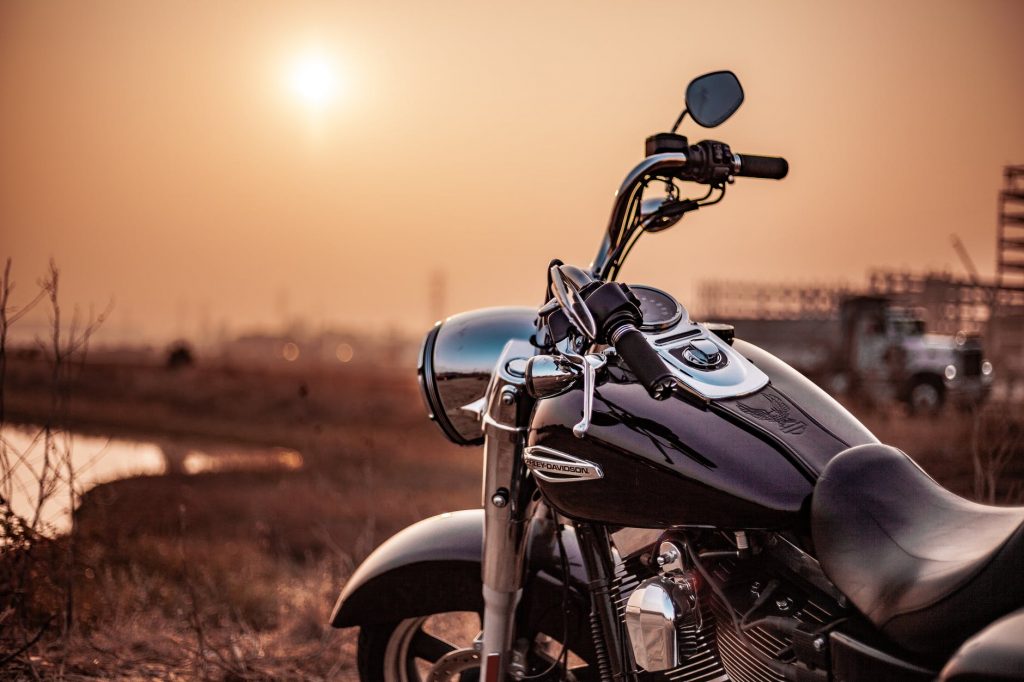‘Connected’ Motorcycles Could Change Road Safety in the Future, Save Lives
Motorcycles are controversial in certain circles, often associated with rebels without causes and risky roads. But they’re also emblematic of classic Americana, and won’t be falling out of popularity anytime soon. The question is how we can make motorcycles safer?
There are undeniable risks that come with riding motorcycles. However, motorcycles themselves are not as inherently dangerous as they may seem. The National Highway Traffic Safety Administration reports that fatal motorcycle accidents numbered 5,172 in 2017. This was actually 3% lower than the numbers reported the previous year. When responsible riders are on motorcycles, they know what they’re doing and how to control their vehicles. For that matter, as long as the vehicles themselves are in good shape, they can be just as simple to maneuver as cars when handled by an experienced operator. The problem is that sometimes motorcycle riders are not experienced and aren’t able to recognize warning signs that suggest that the vehicles are spinning out of control. Furthermore, 31 states do not require motorcyclists to wear helmets, despite the fact that this could reduce deaths by as much as 42%. Right now, they are the only proven ways to save lives in motorcycle accidents.
Fortunately, the same type of technology that could potentially be used to create connected, advanced ambulances can also be used to prevent the types of accidents that land people in ambulances, chief among them motorcycle accidents.
The Prospect of Preventing Motorcycle Accidents
One of the chief issues with motorcycle accidents is that they are often inherently severe. This is because there is little between the rider and the road. They’re simply thrown to the ground or the pavement while riding at extremely high speeds. Even helmets can’t necessarily save riders in all accidents. Therefore, many riders believe that preventing accidents is key.
Creating connected motorcycles could be as simple as utilizing IoT technology. IoT devices can intake data as riders are in motion, collecting information about their behavior, their speed, the proximity of other vehicles, obstacles, road conditions, and much more. The drivers’ health conditions can also be evaluated. Their blood pressure can be analyzed through IoT devices, as can their heart rates, oxygen saturation, and additional details. After synthesizing information, alerts would be sent to an edge device, keeping riders informed about their statuses and what they should be aware of as they continue on the road.
There is a main method through which riders could incorporate this type of technology into their motorcycle jaunts. A Bluetooth-equipped helmet could be worn by riders, seamlessly sending messages to them. They could, through these means, receive information about oncoming road conditions as well as fuel levels and imminent dangers. Drivers wouldn’t look necessarily look different or have to wear any kind of bulky equipment that would take away from their rides. They should be wearing helmets anyway, and at least these kinds of helmets offer more than just physical protection.
The type of technology implemented within these helmets has already been applied to some cars. Certain vehicles can provide warnings regarding lane switching and collision avoidance. But as motorcycles are more compact, it can be harder to fold this kind of technology into them. Incorporating this type of technology into helmets makes it much simpler for motorcyclists to gain the same types of benefits that traditional car drivers already do.
Understanding the Connected Motorcycle
Connectivity is a concern for many Americans in this day and age. We want to be connected on as many levels as possible. This is one reason why the U.S. Department of Agriculture invested around $85 million in improving internet connectivity through the rural areas of the U.S. in 2015. Therefore, it should come as no surprise that many want motorcycles to be connected as well.
A connected motorcycle would have three tiers. Right now, the IoT would have 25 points from the motorcycle, as well as biotelemetry points from the human body. These could be compared to the types of data that would be collected through a Fitbit. The data would then be transferred to a device such as Raspberry Pi, detecting patterns and changes within riders and machines alike.
The technology could be implemented sooner than you might think. In fact, the framework for this system has already been built. Sensors could be added to a motorcycle for as little as $10. The question is really when this theoretical technology will be turned into a prototype and tested.
David Linthicum, the chief cloud strategy officer of Deloitte, wants to push this technology forward as soon as possible. From that point, it’s impossible to know exactly how far the technology could go. It stands to reason that cloud-related technology will become a part of motorcycles in the future. It was estimated that roughly 83% of a company’s workload would be stored on the cloud in 2020. If we rely upon the cloud for work purposes, why wouldn’t we rely upon the cloud to make transportation more technologically advanced and furthermore safer?
The Issues with Changing Motorcycles
One of the main reasons why some motorcyclists could resistant to this type of technology is that it is primarily provided in the form of helmets. Again, many motorcyclists are resistant to wearing helmets in general, never mind helmets that are equipped with safety technology. It’s important that these helmets are not only provided for an affordable price but come with education. Riders may be more persuaded to wear them if they are convinced of the difference that the helmets can make not only for them but for other motorcyclists and drivers.
It can be incredibly difficult to make a transition to accepting new technology. But this type of technology can actually save lives, while not taking away from motorcyclists’ authentic experience. Just as cars are becoming updated with new safety-related technology, so should motorcycles. Connected motorcyclists, as it turns, could truly be safer motorcyclists.




